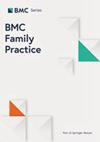在农村地区工作的初级保健医生提供了更广泛的执业范围:一项横断面研究
IF 3.2
3区 医学
Q1 MEDICINE, GENERAL & INTERNAL
引用次数: 0
摘要
执业范围(SoP)是影响初级保健医生(PCPs)的一个重要因素。乡村地区是决定执业范围的重要因素之一。虽然日本有多个农村地区,但尚未研究过农村地区的执业范围以及农村地区对执业范围的影响。本研究旨在描述日本初级保健机构中的 SoP,并探讨农村地区与 SoP 之间的关联。这项横断面研究包括日本的初级保健医生。参与者是从日本初级保健协会的邮件列表中随机抽取的。实践范围清单 (SPI) 和初级保健实践范围 (SP4PC) 被用作 SoP 的指标。日本乡村指数 (RIJ) 用于衡量乡村地区。本研究比较了最城市地区(RIJ:1-10)和农村地区(RIJ:91-100)所有初级保健医生中超过 80% 的人所经历的 SPI(总分、住院护理、紧急护理和非住院护理)和 SP4PC 的项目数。我们还进行了多变量线性回归分析,以研究 RIJ 与 SPI/SP4PC 之间的关系。在 1000 名潜在参与者中,有 299 名医生回复了调查(回复率:29.9%)。与城市地区的初级保健医生相比,农村地区的初级保健医生在 SPI 和 SP4PC 的住院/急诊护理领域中遇到的问题更多。在 SPI 模型和 SP4C 模型中,RIJ 是唯一一个具有更广泛 SoP 的共同因素。在 SPI 模型中,SoP 系数为 0.09(95% 置信区间:0.03-0.16),在 SP4PC 模型中,SoP 系数为 0.017(0.005-0.03)。农村地区与 SoP 有很大关系。这项研究的结果将有助于了解农村和城市地区的 SoP。本文章由计算机程序翻译,如有差异,请以英文原文为准。
Primary care physicians working in rural areas provide a broader scope of practice: a cross-sectional study
Scope of practice (SoP) is an important factor for primary care physicians (PCPs). One of the strong determinants of SoP is rurality. Although Japan has several rural areas, the SoP in rural areas and the effect of rurality on SoP have not been investigated. This study aimed to describe SoP in Japanese primary care settings and examine the association between rurality and SoP. This cross-sectional study included PCPs in Japan. The participants were randomly sampled from the mailing list of the Japan Primary Care Association. The Scope of Practice Inventory (SPI) and Scope of Practice for Primary Care (SP4PC) were used as indicators of SoP. The Rurality Index for Japan (RIJ) was used for rurality. This study compared the number of items of SPI (total score, inpatient care, urgent care and ambulatory care) and SP4PC experienced by > 80% of all PCPs in the most urban (RIJ:1–10) and rural areas (RIJ: 91–100). A multivariable linear regression analysis was also performed to examine the relationship between the RIJ and SPI/SP4PC. Of 1,000 potential participants, 299 physicians responded to the survey (response rate: 29.9%). PCPs in the most rural areas experienced a greater number of items in the inpatientl/urgent care domains of the SPI and SP4PC than those in the most urban areas. The RIJ was the only common factor for a broader SoP in both the SPI and SP4C models. The coefficients of SoP were 0.09 (95% confidence interval: 0.03–0.16) in the SPI model and 0.017 (0.005–0.03) in the SP4PC model. Rurality was considerably associated with SoP. The findings of this study will be helpful in understanding the SoP on rural and urban areas.
求助全文
通过发布文献求助,成功后即可免费获取论文全文。
去求助
来源期刊

BMC Family Practice
医学-医学:内科
CiteScore
3.20
自引率
0.00%
发文量
0
审稿时长
4-8 weeks
期刊介绍:
BMC Family Practice is an open access, peer-reviewed journal that considers articles on all aspects of primary health care research. The journal has a special focus on clinical decision making and management, continuing professional education, service utilization, needs and demand, and the organization and delivery of primary care and care in the community.
 求助内容:
求助内容: 应助结果提醒方式:
应助结果提醒方式:


